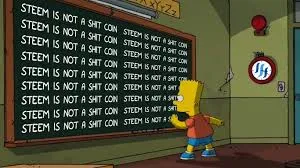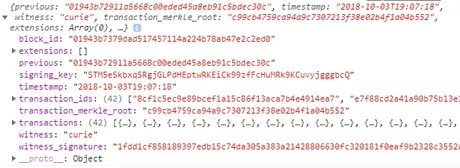
First off, Steem is a trifling name. Every time I try to talk about Steem with someone they bring up the video game service Steam. If Steemit Inc. goes under can we agree to rebrand like Nano did with RaiBlocks?
Secondly, as far as Steemit Inc. is concerned, how do we know that ned hasn't already decided to abandon ship and is simply buying some time to power down? If this was the case I would beg whales to dump their coins on the market in order to punish anyone else doing the same. Honestly I'm a bit surprised that this isn't happening already. There is plenty of panic in the market right now that would allow a single whale to create their own dip to buy.
In any case, as I've said before, Steemit Inc. is a crutch and we need to learn how to walk without them. The first step in the right direction is getting everyone on the same page about what we stand for and what we are capable of.

What is Steem?
Contrary to popular opinion, Steem is not social media. At its core, this blockchain is just that: a chain of blocks.

This is the foundation of our little experiment. Every three seconds a new block is created that points to the previous block. Each transaction in every block has been signed, proving that whoever put that transaction on the chain possessed a valid key for that operation. As you can see, social media has nothing to do with this blockchain at its core.
How did we get here?
Well, Steemit Inc. created Steem. How did they monetize it? By pre-mining it into the ground. They even forced a reset on the mining process because their hardware crashed in the middle of this little stunt. Many people would agree that this isn't exactly a fair way to start a blockchain, but options in this regard are quite limited. We may be thanking our lucky stars later that Steemit went this route and avoided ICO regulation as the SEC begins to crack down on projects that are out of compliance.
In the long run, it matters very little how centralized the coins were on the genesis blocks. As we are all learning the hard way, coins can only be spent once. This huge dip in the market automatically guarantees that coins en masse are migrating away from their original owners. Is this doomsday or a blessing in disguise? Only time will tell.

What makes Steem different?
Our blockchain allows for raw text to be written directly on a transaction. This is how Steemit was able to leverage Steem to create our ragtag social media outlet. Front-ends like steemit.com, busy.org, and steempeak.com interpret the text on the blocks and display it in a more organized way.
There are many aspects of our front-ends that have nothing to do with the blockchain. For example, we've all seen posts get buried by flags and censored by whales. How does the Steem blockchain know when someone's words deserve to be hidden? It doesn't. Our blockchain is totally unbiased. It's the front-end that decided what and what not to show.
This is also true of the trending tab. The trending tab does not exist on the blockchain, it is simply one interpretation derived from the blockchain. The same is true for reputation scores. If you think that we're incentivizing bad behavior like vote selling and censorship, the blockchain has nothing to do with it. These third-party front-ends are the problem; one that can be solved without any kind of fork to the actual core code.
Our blockchain can't become obsolete overnight. It would take years of stagnant development in order to lose its edge. As such, Steemit Inc. going under wouldn't be the worst thing in the world, especially considering that @utopian-io is attempting to expand and pay this community for valuable open-source development.

Mainlining Code
Even more importantly than raw text, we can embed custom JSON operations (JavaScript) directly into our blocks. In my opinion, this is the truly exciting thing about Steem. Any post on the Steem blockchain can attach code that could then be interpreted by a third-party application.
When you combine this feature with our governance model it becomes quite powerful. Transaction fees are paid out to the witnesses as a flat 10% inflation, allowing anyone to put information on our chain for free as long as they have the required credits.
In my opinion, this opportunity is being squandered by greed and a total lack of innovation. How many development hours have gone in to bid-bots and other services that only serve to devalue our currency in the long run? As bleak as that may sound, I believe a positive path forward will eventually be realized.

Community Cliche
As much as I hate to say it, our community makes us quite a bit different than other blockchains. Think about the other communities like Bitcoin, Ethereum, Ripple, etc. We have our own platform that allows (and even rewards) making connections with other people. Theoretically this gives us a significant edge in the long run as we scale up and make valuable applications.
However, too much emphasis seems to be placed on community. Community means nothing without governance. How can we come to consensus and agree on a set of rules that will implement positive and negative reinforcement? This is the big question everyone should be asking themselves. Our community means nothing if we can't figure out more solid ways to reward good behavior and punish bad actors.
Conclusion
At its core, our blockchain is much simpler than it appears to be from the outside looking in. When simplified down to the root, we see nothing but a synchronous list of timestamped operations. This is the beauty of blockchain technology. It starts with a simple idea but then cascades into the realm of limitless possibilities. Unfortunately, the waves of speculation and patience crash harder and faster than those rooted in actual fundamental development. Time is the greatest equalizer, especially in a culture bred for instant gratification. Patience is a virtue.
Return from What is Steem? to edicted's Web3 Blog
